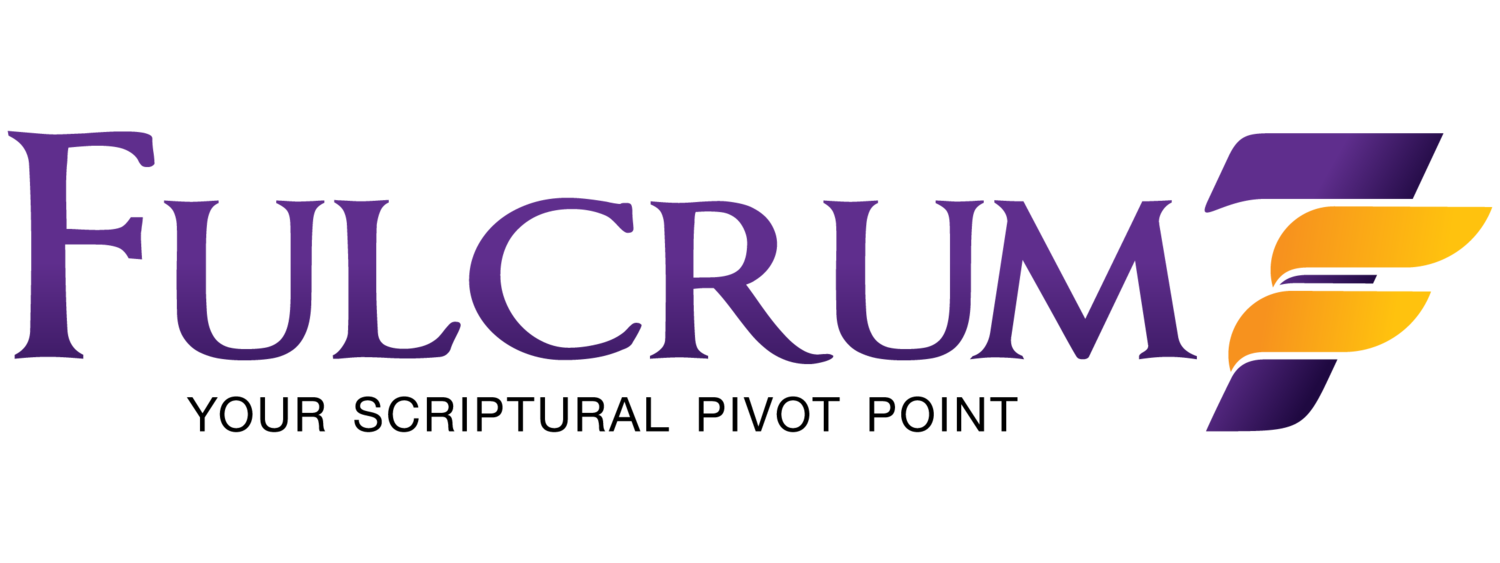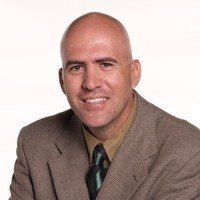I saw that the testimony of the True Witness has not been half heeded. The solemn testimony upon which the destiny of the church hangs has been lightly esteemed, if not entirely disregarded. This testimony must work deep repentance; all who truly receive it will obey it and be purified. (EW 270.3)
In the recent set of events involving both Pastors Conrad Vine and Ron Kelly; SDA Administrative representatives, mainly Pastors Mark Finley (assistant to the GC President) and Mark Howard (Michigan Conference, Associate Director of the Sabbath School and Personal Ministries Department), have taken to the video/air waves to argue that having apostasy in the Church and being in apostasy, are drastically difference conditions.
At the center of their arguments, as I understand them, is that the wheat and tares will grow together, and it is at the final sifting where the God will sort out the saved from fallen (Matt. 13:24-43). And because there is not a remnant Church movement post the Seventh Day Adventist denomination; ours is The Remnant Church and criticism against the Church is an attack on The Remnant Church and of itself apostasy. I may have taken some assumptive liberties to their arguments, but I believe I have captured their core perspective.
To their argument I would ask how much apostasy is too much? The SDA organization is made up of numerous components: churches, conferences, educational and medical institutions. How much apostasy must exist before an institution is deemed in apostasy and administratively addressed? I am not arguing that there will come a Remnant Church from the SDA denomination, but as Parishes, Pastors, Universities and Administrators pursue their own version of Christianity, what is a foundationalist SDA supposed to do? Blindly perpetuate the evolution of biblical “Truth”?
Pastor Howard admittedly, in one of our Village SDA/Michigan Conference meetings, indicated he left his former conference employer as they were requiring biblical positions that did not align with his convictions. I am pleased to have Pastor Howard as part of the Michigan Conference staff, however what do we say to his former church members who do not have relocation as an option for combating apostasy?
If we recognize that there is apostasy in the Church, where are the examples of our Administrators to call sin by its right name? There are plenty of examples of administrators exercising authority to conform subordination. But if the subordinates maintain hierarchical operational construct, should they be afforded the freedom to rewrite biblical precepts?
Only known confidentially through back channels; was not recently Andrews University and La Sierra University high on the General Conference list of concerns regarding their deviation from our SDA tenets (apostasy)? If so, how did the former president of AU find employment at the North American Division and its former provost become employed as President of La Sierra? Do some conferences divert tithe money from La Sierra University because they believe it is in apostasy? Is it better to live with 50 shades of apostasy within our denomination and spare our World Church the embarrassment of addressing it?
I do not, and hope I never will, advocate for the weaponizing of tithe. This is a personal position for me, and it has much to do with my spiritual journey. That being said, as conference administrations are more isolated from the constituency and are afforded via By-Laws and Church Manuals the ability to pursue Normative Truths (beliefs within a group) with little threat of retribution, what is the remedy? The track record among the SDA Administrative Hierarchy in addressing apostasy or to reverse errant positions is abysmal. Again, I ask, how much apostasy is too much?
The Remnant Church
What appears to be at the core of the debate between the watchmen on the wall and the administration of the Church is: can the laity or subordinates to the administration hold it accountable? The likely reason the definition of the Church has recently heightened in sensitivity. Within the confines of the Church a position is evolving—a position that due to the Church’s remnancy, it cannot be called into question. For as it will not fall, or succumb to full apostasy, the well-intended actions of its leaders must be accepted (i.e. not called into question).
There is much debate that has occurred between our constituency, SDA theologians, and administrators regarding; what is the SDA Church. Is it the congregation of members, the pastoral leadership, is it the hierarchical, multi-level, redundant administrative levels of church organization, or is it all the above? I have listened to several perspectives on who/what is the Church and surprisingly the answer depends on how the definition of the Church impacts the rhetorician.
To the congregate and constituency, the Church is the collective body of people that seek membership under the SDA umbrella and work collectively to empower the movement. No one component is the Church, but a body of parts that work collectively.
To a theologian, who wishes to influence the beliefs and understanding of the denomination, the Church is the collective body as led by the interpretations of the biblically studied intelligentsia. The sheep need the scholarly Biblical dissections that can only be understood and translated by theologians and the Church is the collective as guided by biblical literati.
To the administrators, surprisingly enough, the Church is the executive construct we seek membership to. As the power to regulate who and what falls within the administration, and declaring that there is not another remnant organization that evolves from the present SDA Church, the Church is the Remnant Administrators who afford us our biblical ensemble.
I am sure each group would take issue with my anecdotal theological observations. Yet, if you weave together statements, behavior, and actions among each sector, most will agree I am not far off in my observations. What is clear is that there is no consensus between the Church Members, the Church Brain Trust and its Leaders as to what defines the Church. The evolution of church manuals, bylaws, and working policies have shifted significant authority towards the administrative structure. We wake to find the Golden Rule in full effect, those with the Gold make the Rules, and administrators define all that we are and believe. And thus, the Church is codified as the administration.
In my simplistic mind, the Church is that which must be present in order for it to exist. Strip away all of the non-essential components, departments, hierarchical administrative layers, and we find that which is critical to the existence of the Church is congregations/members, local pastors, and basic corporate organization.
Why is there Apostasy?
How at a time where we have endless Bible translations, concordances, theological schools, systematic and biblical theologians, and over 100,000 pages of Spirit of Prophecy can we not find commonality on Truth? How is it today, you can enter the religion department at our flagship SDA university and be met with a religion teacher asking students to sign a non-disclosure agreement so he can present his position on affirming LGBTQ+?
The real question is, are we a society in pursuit of Truth or a society in pursuit of defining Truth? For every Biblical topic we can conjure up, there is a pastor, theologian, and administrator on opposite sides of the issue willing to stake their salvation that their perspective is truth. The greatest victim of the 21st century is truth. And Biblical truth has been swept up in postmodernist ideology.
Truth in Postmodernism
Where is truth to be found in today’s Christendom? Truth or its absence is at the core of our present-day social norms. Postmodernism abandoned the need of objective truth (physically proven) and replaced it with normative truth (agreed within a group). In the book, “The Truth About the Truth: De-confusing and Re-constructing the Postmodern World,” author Walter Truett introduces the Postmodern shift in Belief as:
“… we are in the midst of a great, confusing, stressful and enormously promising historical transition, and it has to do with a change, not so much in what we believe as in how we believe…People all over the world are now making such shifts in belief – to be more precise, shifts in belief about belief.”
Modernism was:
“…getting the world’s diverse peoples to see things the same way – the rational way.
20th Century scientific rationalism… linear progress, absolute truths, and rational planning of ideal social orders.” (emphasis added)
Postmodernism ushered in:
“… the age of over-exposure to otherness… different reality… living in a new world that does not know how to define itself by what it is, but only by what is has just-now ceased to be.”
If we cannot agree on what truth is, what can we believe? Is peer reviewed science truth? According to our General Conference it should shape our health and medical positions. If we are to follow Normative Peer Reviewed Scientific Truth, we would then accept,
There is no God.
Life on earth is the result of an evolutionary process set into motion by a yet to be discovered event of origin.
“Though our GC president has challenged us to “Hold him accountable”, where is the mechanism where we can dialogue and pursue truth? ”
Is science or theology then, bad? Not at all, it is the bias from which the scientist or theologian approaches their study which is corruptive. Consider that the United States of America is one of only two developed countries that allows pharmaceutical companies to market prescription drugs. And the USA is the only country that allows advertising on news programs.
As stated by a pharmaceutical whistleblower, pharmaceutical companies don’t advertise to get product exposure, they do it to create market dependency on their advertising dollar. Few organizations will bite the hand that feeds them, and pharma has learned this very well. Can we trust the “expert” opinion of anyone that benefits from the subject in question?
Remnant vs Infallible
Now more than ever, in an environment where truth is no longer objective, where components of the Church freely pursue their normative ideologies, can we really project an operational construct where administration of a remnant organization places the administrators beyond reproof? Or is the mechanism that will see the Church through — all the way to remnancy — the watchman on the wall that calls into question the errant actions of the isolated and insulated administrator(s)?
Does God remove our individual responsibility to follow spiritual truth if it is an SDA organizational/institutional component that is teaching us apostasy? Though our GC president has challenged us to Hold Him Accountable, where is the mechanism where we can dialogue and pursue truth?
SDA Administrators have been pursuing the least effective element for organizational success; Model of Operations versus the most effective being; Culture. Any leader that focuses on the assembly line aspect of the operation misses the greatest ability to impact the success of the organization. Leadership is not making decisions for everyone but influencing the masses that have the capacity to decide for themselves. Great leaders develop high performing teams built on trust. Terrible leadership is built on the authoritarian structure of swim-lanes and assigned tasks.
The church Remnant is the Church built on trust. In pursuit of the Truth, not normalized by egocentric ideology but rooted in the Word as sharpened by the iron of its servants. No one has capacity to lay claim to the Church. All are at best custodians of His movement and in His service. Whether you have given a lifetime, or simply a season, it is your privilege to be an instrument of the Gospel and only in humility will you be effective.
****
Daniel Bacchiocchi is an architect and builder. Today he operates an architectural and construction business in Michigan as well as a non-profit building mission organization, Master’s Builders, Inc., supporting SDA efforts in financially depressed communities around the world.



